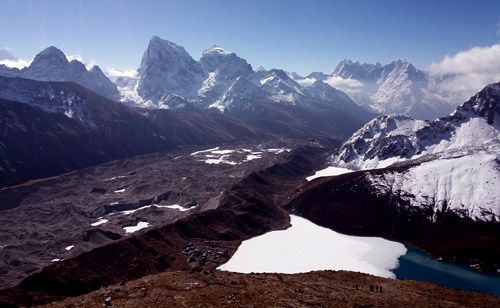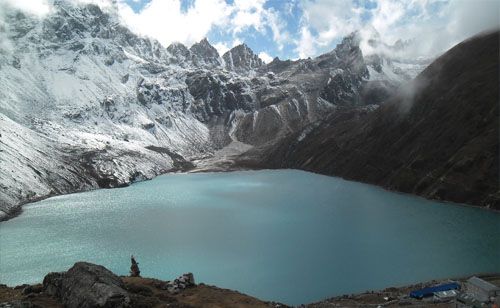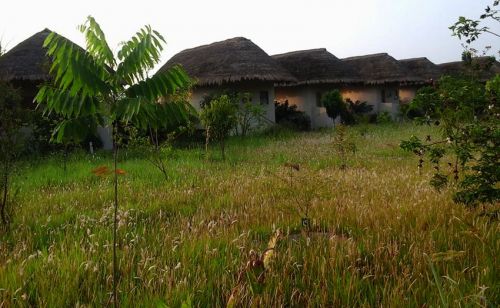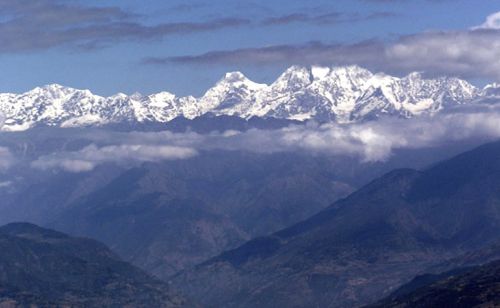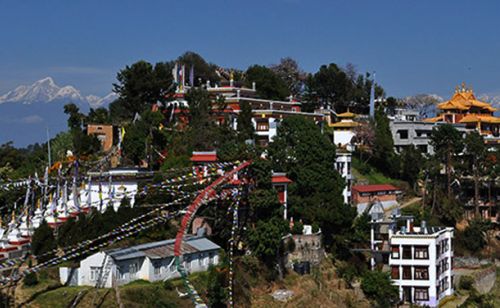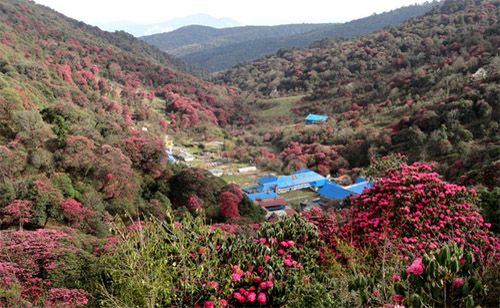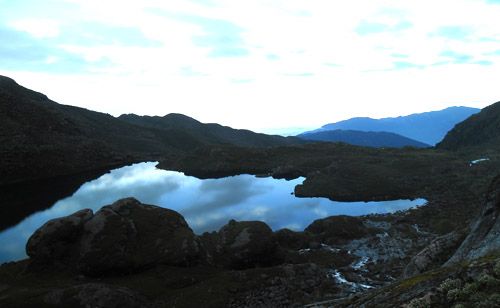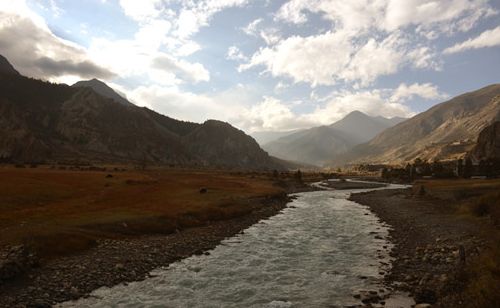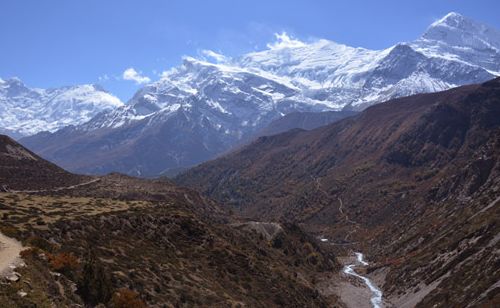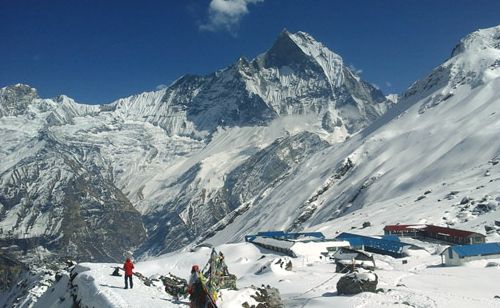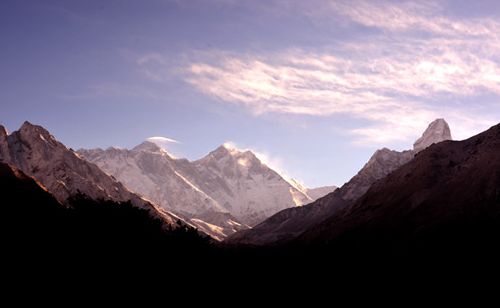Tamang Heritage & Langtang Valley Trek- 13 Days
Trip cost start from: US$ 1115
Trip Destination:Nepal
Total Duration:13 Days
Difficulty:Moderate
Trekking Days:10
Overnight:At guesthouse & hotel
Best Season:Mar - May & Sept - Nov
Max. Altitude :4770 m. Kyanjin Ri
Show AllGlimpse of this trip:
- Fascinating view of Langtang Himalayan Range
- Buddhist religion & incredible Tamang culture
- Beautiful mountain view from Nagthali & Kyanjin Ri
- Traditional Tamang village & their lifestyle
- Blooming rhododendron is another attraction in March & April
Tamang Heritage & Langtang Valley trek is one of the delightful trek. It focuses on Tamang culture altogether naturel beauty of Langtang Himalayan Range. Ghatlang village is the most attractive destination of this trip. In this trip you can get lots of information about the Tamang and their lifestyle as well as culture. In contrast of the other treks it has provided you different experience. From there you could get real Nepalese traditional lifestyle. In this area most of the people are uneducated because of their economic crises & remote geographical feature. Though it’s remote it’s really beautiful to look at which makes you feel better. In addition it offers us awesome welcome with snow covered mountains long range where you can have wonderful experience with Tamang culture, their lifestyle and hospitality. During this trip you will have golden opportunities to observe panoramic beauty of Langtang Himalayan Ranges.
This trek begins after drive from Kathamndu to Syabrubenshi this road is connected Nepal with Tibet. It takes approximately 7/8hrs from Kathmandu to Syabrubensi by local bus. Our journey starts from Syabrubenshi to Kyanjin Gumba (3870 m) through the traditional Ghatlang Tamang villages with wonderful places culturally & geographically. Kyanjin Gumba (3870 m) is the highest elevation of this trip from where fascinating views of Langtang Himalayan Range can be observed. We can also view some Tibetan villages which are lies in China.
Google Map
View on google map
Detail Itinerary
Day 01Arrival at Kathmandu airport and transfer to hotel along with trek preparation. Overnight at hotel.
Day 02Drive from Kathmandu to Syabrubesi (1467 m) about 7/ 8 hrs drive by local bus/ jeep. Overnight at guesthouse.
Day 03Trek from Syabrubesi to Gatlang (2238 m) about 4/ 5 hrs trek. Overnight at guesthouse.
Day 04Trek from Gatlang to Tatopani (2607 m) about 6/ 7 hrs trek. Overnight at guesthouse.
Day 05Trek from Tatopani to Thuman (2400 m) via Nagthali (3165 m) about 5/ 6 hrs trek. Overnight at guesthouse.
Day 06Trek from Thuman to Briddim (2345 m) about 5/ 6 hrs trek. Overnight at guesthouse.
Day 07Trek from Briddim to Lama Hotel (2470 m) about 6/ 7 hrs trek. Overnight at guesthouse.
Day 08Trek from Lama Hotel to Langtang (3430 m) about 5/ 6 hrs trek. Overnight at guesthouse.
Day 09Trek from Langtang to Kyanjin Gomba (3870 m) about 3/ 4 hrs trek. Overnight at guesthouse.
Day 10Exploration day at Kyanjin Gomba. Hike up to Tserko Ri (4984 m) and back to Kyanjin Gomba for overnight, about 7/ 8 hrs trek.
Day 11Trek from Kyanjin Gomba to Lama Hotel (2380 m) about 6/ 7 hrs trek. Overnight at guesthouse.
Day 12Trek from Lama Hotel to Syabrubesi (1467 m) about 5/ 6 hrs trek. Overnight at guesthouse.
Day 13Drive from Syabrubesi to Kathmandu about 7/ 8 hrs by local bus/ jeep. Overnight at hotel.
Cost Include
- All additional government tax.
- All necessary trekking permits.
- Airport picks and drops by private vehicle.
- Hotel in Kathmandu (2 nights) with B&B base.
- Accommodation in lodge/ guesthouse during trekking.
- Meal on full menu (breakfast, lunch and dinner) with tea and coffee during the trek.
- Accommodation, salary, travels insurance, transportation of Nepali trekking staff.
- An experienced government licensed trekking guide and porter (1 porter for 2 trekkers).
- All land transportation by local vehicle Kathmandu-Syabrubensi-Kathmandu.
Cost Exclude
- International air fare.
- Lunch and dinner in Kathmandu.
- Your travel insurance (Compulsory).
- Tips to guide and porter and all kind of Drinks.
- Nepal entry visa fee (U$ 40 for 30 days from date of issue).
- Bar bills, telephone bills and other personal expenses (shopping, laundry & shower).
- All expenses due to sudden events e.g. personal illness, strike etc.
Approximately Individual Expenditure on the Spot
- Lunch or dinner in Kathmandu (10- 15 US$) per item
- Mineral water per bottle (1-3 US$)
- Hot shower (1-3 US$)
Note: The others expenses are depend on you (shopping, hard drinks, etc.) and situation (flight cancellation, rescue, etc.). If you depart earlier than itinerary program your payment will not be refunded and early arrival expenditure also will not be covered by your trip cost.
Trip Info
Accommodation: We provide wide range of accommodation service for traveller as per there request from 5 star hotel to normal guest house in main city areas where available, while the price of the trip might alter on that basis. Langtang region is destination for wide range of trekking route and packages, good quality of accommodation options are available there.
Food /Meals: Cities areas in Nepal offer excellent and variety of food and cuisines as it has many hotels and restaurants. National/International food, Local food, cultural food, fast food, dessert items, snacks etc are easily available in cities areas. While in case of remote areas one can enjoy Local food grown and prepared. Langtang Region is famous for trekking and travelling, food of good quality are available but option and variety might be less in compared to main cities area.
Drinking Water: We highly advise to minimize use of plastic during the trek. Please always remember that there is no any plastic recycle facilities up in the Mountains. In this regard we highly recommend you to use boiled water for drinking or use water purification tables instead of buying water in plastic bottles. Your Trekking Guide will suggest you the best and most ecological friendly way for drinking water during a trek depending on a trek area. We advise to have your own water bottle with you for the whole trek which you can refill at the lodge/camp-site in the evening and morning or at lunch break on the way.
Best Season: As what one can see highly depend upon the seasonal condition, it is always best to travel on the best season for the corresponding trek. It not that on season other than the best one, the trek gets worse, but one can fully take advantage of the trek when done in best season. The best season for this trek is Mar-April/Sep-May. This trek can be done throughout the year.
Expert Team: Working your way through dangerous mountainous route can be very challenging and overwhelming. One can encounter stamina, high altitude, weather condition, steeply and slippery path way while travelling depending upon the route one choose. So leading the trip despite of all the challenges requires experienced and expert people who are directly under our care. They are properly trained and government certified individual who are very capable and knowledgeable to work out through extreme condition and lead you safely. All of our staff are provided with insurance, medical services and equipment as their safety is something we do not take lightly.
Equipment and Travel Packing Ideas: It is our utmost belief that carrying appropriate and proper equipment is better than carrying excessive quantity of equipment. So one should only carry appropriate and only absolute necessary equipment with them. Warm clothes, trouser, t-shirts, hiking boots, sunglasses, sun cream, knife, walking stick, backpack, headlight, sleeping bags are among the essential stuff one requires. Equipment we provide are limited so, one should carry required equipment by them or it can be bought in any appropriate places.
Clothing: Liner socks, Trekking shirts short sleeve, Thermal underwear, fleece sweaters lightweight, one heavier Easy drying long sleeved base layer shirts, woolen blends trekking socks, pair trekking pants with zip off bottoms, down vest, wind/rain proof over layer - jacket and pants, peak hat, headband, Warm winter hat, lightweight thermal layer hat, pair gloves, down jacket, Pair trekking boots, pair down booties Great for keeping feet warm in room and while sleeping and for in the lodge. In case if you decide to join the trek with us, do enquiry about clothing requirement before leaving as there might be slight changes in requirement depending on season and travelling date.
Safety and Security: Safety and security of traveller and team staff is matter of great concern to us. Selection of proper route, highly trained professional team and equipment required is done with great care and knowledge. We have proper remedial services during the trek with professional staffs; first aid kit, oxygen bag and helicopter service for emergency rescue whenever trekkers get physical loss or altitude sickness.
Experience and Fitness: Though high level of fitness and previous experience is not needed for trekking in this reason but food stamina, workout and running and walking habit helps to higher extent. Walking trough rocky steeply path way can be challenging but with appropriate rest and walking habit, one can complete their journey with no regret left behind.
Acclimatization: Acclimatization is important for the trekking above 3500m. Our trekking schedules have been carefully designed to maximize your ability to acclimatize safely. We ascend slowly and ensure an adequate number of rest days. However, it is still possible for mountain sickness and your tour leader will be watching for symptoms with an experienced eye throughout the trip. These symptoms are commonly headache, nausea, lethargy and sometime breathlessness. If you or any of the group members display any of these symptoms he will be able to provide informed advice and ensure a proper course of action. Your tour leader will advise you more thoroughly regarding the altitude and most of the problems prior to starting on trail.
Equipment List
| Trekking Equipments List
Trekking is simply walking in the hills or the mountains, be it for a day or weeks or more. Certain basic trekking equipment is essential while you're trekking to any parts of the trekking destinations in Nepal. The items may differ from the area to area and on season to season. The following are the list of the equipment that we suggest you for your trekking in Nepal Himalaya. Clothing:
Equipment's and Accessories:
Medical:
Details of Trekking Equipment's:
|
Client Reviews
-
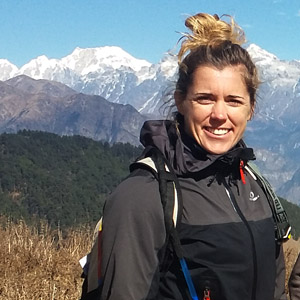
Très Bon Trek !
Trek magnifique, un guide au top, très attentionné et généreux!!! Des images et une gentillesse qui resteront à jamais gravées dans nos mémoires. Merci Dhan!!!
Eva Dourthe
January 11, 2018
Trip Note
The itinerary given above is just for guidance not the strict rule so it’s possible to customize according to your need.
Enquiry
Useful Info
related Trips
YOU MAY LIKE THIS
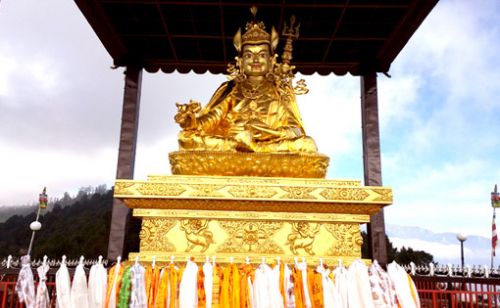
Helambu Trek- 8 Days
8 Days
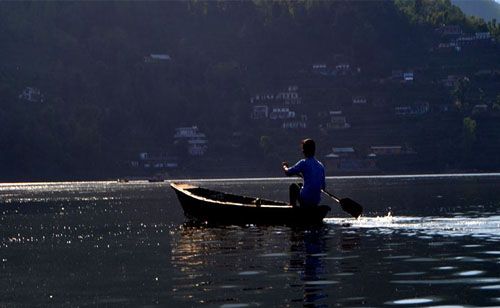
Pokhara Tour
05 Days
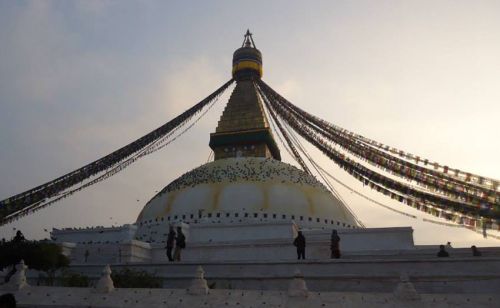
Kathmandu Valley Tour
04 Days
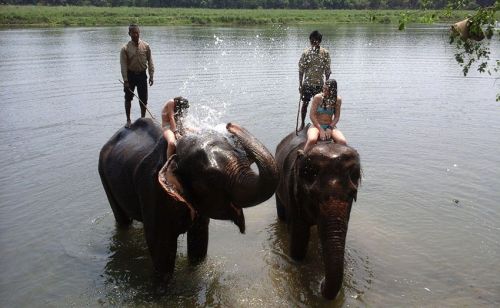
Kathmandu Chitwan Tour
05 Days
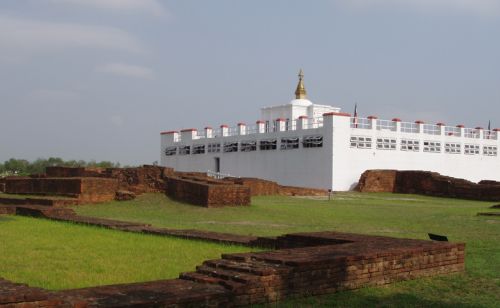
Kathmandu Lumbini Tour
07 Days
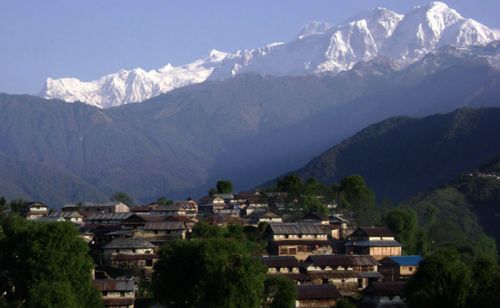
Ghale Gaun Trek
10 Days
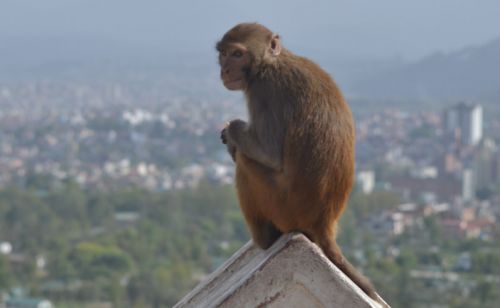
Around the Kathmandu valley Trek
06 Days
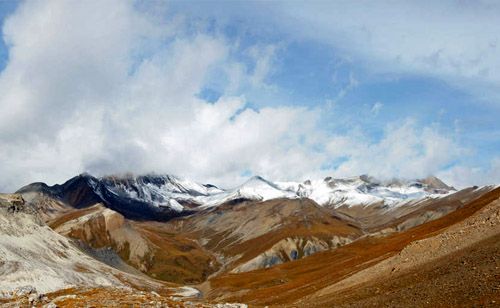
Upper Dolpo Trek
28 Days
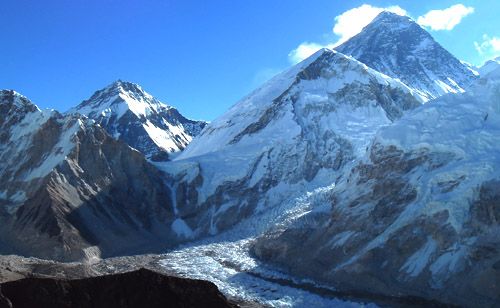
Everest Base Camp Trek- 11 Days
11 Days
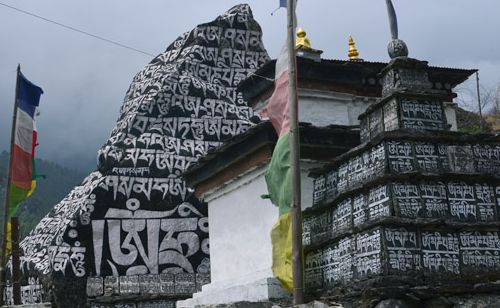
Sherpa Culture Trek- 15 Days
15 Days
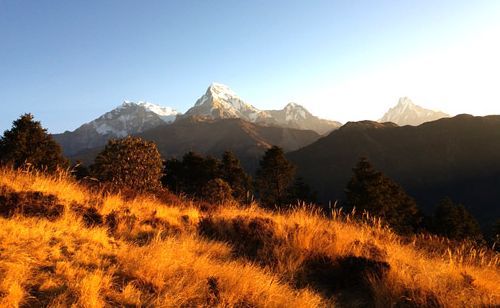
Poon Hill Trek- 6 Days
6 Days
.jpg)

